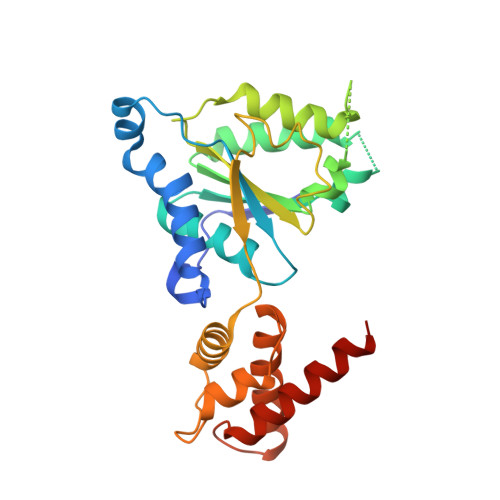Structural basis for proteasome formation controlled by an assembly chaperone nas2.
Satoh, T., Saeki, Y., Hiromoto, T., Wang, Y.H., Uekusa, Y., Yagi, H., Yoshihara, H., Yagi-Utsumi, M., Mizushima, T., Tanaka, K., Kato, K.(2014) Structure 22: 731-743
- PubMed: 24685148
- DOI: https://doi.org/10.1016/j.str.2014.02.014
- Primary Citation of Related Structures:
3WHJ, 3WHK, 3WHL - PubMed Abstract:
Proteasome formation does not occur due to spontaneous self-organization but results from a highly ordered process assisted by several assembly chaperones. The assembly of the proteasome ATPase subunits is assisted by four client-specific chaperones, of which three have been structurally resolved. Here, we provide the structural basis for the working mechanisms of the last, hereto structurally uncharacterized assembly chaperone, Nas2. We revealed that Nas2 binds to the Rpt5 subunit in a bivalent mode: the N-terminal helical domain of Nas2 masks the Rpt1-interacting surface of Rpt5, whereas its C-terminal PDZ domain caps the C-terminal proteasome-activating motif. Thus, Nas2 operates as a proteasome activation blocker, offering a checkpoint during the formation of the 19S ATPase prior to its docking onto the proteolytic 20S core particle.
Organizational Affiliation:
Graduate School of Pharmaceutical Sciences, Nagoya City University, 3-1 Tanabe-dori, Mizuho-ku, Nagoya 467-8603, Japan; JST, PRESTO, 3-1 Tanabe-dori, Mizuho-ku, Nagoya 467-8603, Japan.















